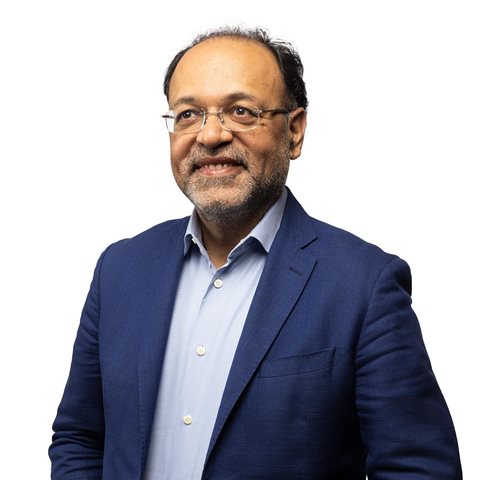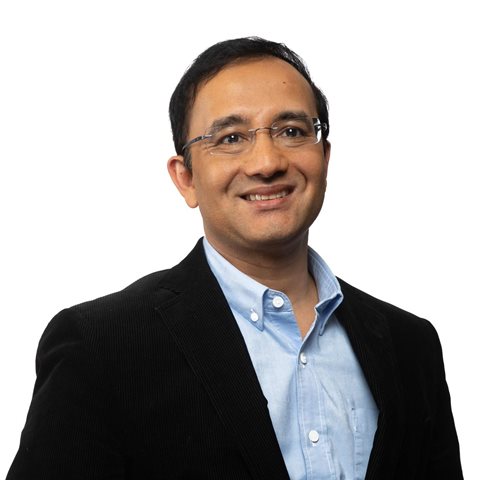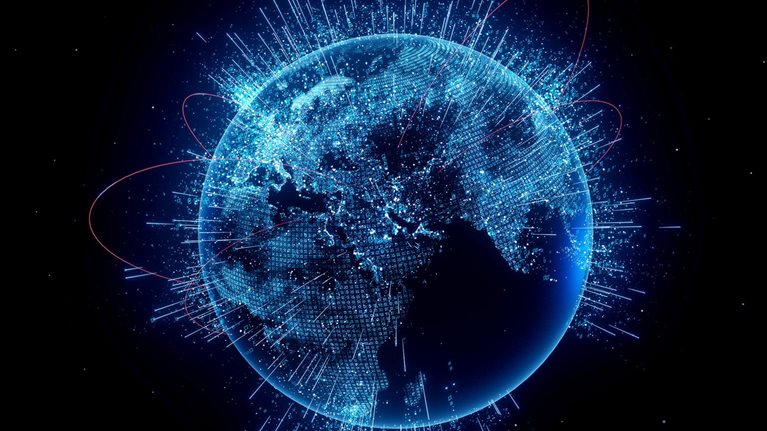2022 was a turbulent year, with geopolitical tension, financial-market volatility, inflationary recession, and food and energy shortages as a result of the war in Ukraine and the COVID-19 pandemic. Today, the world may stand at a cusp of a new era, characterized by serious supply-side challenges amid a shifting geopolitical landscape.
In Asia, the ripple effects of these global events, alongside the slowdown in the Chinese economy, disruptive demographic trends, and climate change, will likely have profound impact. Economic growth in the region slowed down in 2022, and is expected to remain subdued in 2023.1 Climate change continues to have devastating effects, with droughts in China, floods in Pakistan, and India witnessing an extreme weather event almost every day for the first nine months of 2022.2 Aging populations, particularly in East and Southeast Asia, risk exacerbating these economic challenges with slower labor force growth.
Even as the world becomes more complex, humanity continues its forward progress as today’s leaders focus on building resilience—including geopolitical resilience—to weather these storms. Indeed, the best leaders and companies today opt to play both offense and defense. They follow a defensive approach and protect their downside risks, but they also capitalize on new opportunities to generate upside, showing both strategic courage and long-term vision.
“It is the nature of crises that they don’t send a ‘save the date’ notification; you never know they’re coming. If you knew they were coming, you could have planned for it, and it wouldn’t be a crisis,” said Anna Bligh, CEO of the Australian Banking Association, a group composed of 20 participating banks. “You [also] won’t know if it’s a one-day crisis or a 15-day crisis or more. So, if you assume the responsibility of leadership, then that brings with it a responsibility to make sure you are always ready to be on.”
In reevaluating their business strategies, Asia’s top CEOs are also redefining what it means to be a leader. Instead of being in a wait-and-watch mode and letting the crises pass, they lean into the volatility and find new opportunities. There is a sense of determination and purpose in their decision making. At the same time, they are equally willing to learn, unlearn, and embrace change.
“The world is becoming more complex. Leaders need to have the mindset that they are constantly in flux. They have to keep reinventing to be relevant to the new world,” said Loh Chin Hua, chief executive of Singaporean conglomerate Keppel. Throughout Asia, examples abound of business leaders who are reinventing their organizations—and their own professional journeys along the way. In 2022, we spoke with many current and former CEOs to delve deeper into this changing face of leadership. Based on our Leading Asia and India Ahead interview series, we spotted three shifts under way in how leaders are building their businesses in the region. They include the following:
- delivering sustainable and inclusive growth with technology
- creating dynamic, inclusive, and resilient cultures
- adopting a growth and learning leadership mindset
Delivering sustainable and inclusive growth with technology
Asia, like the rest of the world, is witnessing an acceleration toward a more digital economy, but the progress is not uniform. Countries such as China and Singapore, among others, have advanced digital transformation capacity, but other developing countries in South and Southwest Asia are lagging behind.3 As countries strengthen their digital infrastructure and embrace new technologies, entrepreneurial business leaders are harnessing these opportunities to change people’s lives and address crucial societal challenges.
Before joining the US software company Salesforce as its India CEO, Arundhati Bhattacharya was a chairperson at the State Bank of India, where she spearheaded radical digital initiatives, including launching digital-only brands and mobile apps. Bhattacharya’s pursuits are backed by her belief that for a country of India’s size, population, and geography, financial inclusion can only be attained by having a strong technology backing. “If we are talking about raising the standards of living of all Indians, digital is the only way up. It is too costly to deliver all the services to all corners of India through a brick-and-mortar approach. If you do it digitally, you can not only deliver it to the far reaches of the country, you can also hyperpersonalize it by using AI and robotics,” she said.
For Nandan Nilekani, cofounder and nonexecutive chairman of the multinational IT company Infosys, markets play a role in the widespread adoption of digital technology, but some things must be provided as public infrastructure, as a means of creating social good. As he told McKinsey, “If a billion people can use something, then that’s a benefit. A billion people can learn, get better healthcare, and change jobs using technology.” Nilekani, who has helped the Indian government roll out several digital initiatives, including the digital identity card Aadhaar (the world’s largest biometric program), is now focused on creating an open technology network for India’s e-commerce market to help smaller merchants and retailers compete with larger technology companies.
Alongside digitization, Asian business leaders are also making proactive moves to capture the opportunities arising from the net-zero transition. Asia’s sustainability efforts have created a market for green businesses that could reach as much as $4 trillion to $5 trillion in size (across 11 sectors) by 2030, according to McKinsey analyses. Keppel’s Loh, for example, kick-started a bold organizational makeover in 2020, putting environmental sustainability at the core of Keppel’s strategy, mission statement, and its senior management’s performance appraisal process. The firm is also incorporating sustainability into its investment strategy, be it through developing floating or tropical data centers, or using liquid hydrogen or green ammonia to power the energy grid and data centers. “I think the market likes the idea that we are not just green but can promote a greener world through the solutions that we provide to our customers,” he said.
Meanwhile, Australia’s decarbonization efforts and rapid acceleration of its digital economy have also created extraordinary opportunities for businesses. Australian Banking Association’s Bligh highlighted the country’s numerous solar and wind power locations, its vast hydrogen opportunity, and its global competitiveness in suppling critical minerals into the digital economy. “These are just three opportunities, but what needs to go with that is making sure that we have the skills, the investment, the resources, and the mindset to build on top of that and make Australia one of the leading countries in this transition,” she said.
Creating dynamic, inclusive, and resilient cultures
Asian leaders are also prioritizing—and in many ways rethinking—their relationships in the workplace. At a time of fierce competition for talent and finding the right hybrid-working norms, leaders are placing renewed emphasis on strengthening their organization’s culture and purpose.
For Girish Mathrubootham, CEO and founder of software-as-a-service (SaaS) firm Freshworks, human-centered leadership has been a crucial driver of success. Mathrubootham believes that building a successful business with the right value system and ethics is an accomplishment by itself. “The only thing that works in Freshworks for a leader is earning trust through a heart-led approach, which focuses on putting humans first, over business motives, and doing the right thing by them,” he said.
In 2020, Rishad Premji, chairman of the software giant Wipro, also began the task of reshaping the organization’s culture by institutionalizing five commonplace habits in the workplace: being respectful, being responsive, always communicating, demonstrating stewardship, and building trust. According to Premji, people and culture determine a company’s success and failure as much as strategy, if not more. “The question is how can you build this strong high-performance organization? Oftentimes, people associate that with being a bit rough and abrasive. I am a big believer that you can build a high-performing organization that still has a soul, that is empathetic, vulnerable, collaborative, and decent,” he said.
Some executives are also working to improve the relationship between the CEO and their boards, an often-discussed topic that has become even more relevant as companies deal with increased uncertainty. Alison Watkins, who sits on the board of several organizations, including the biotech company CSL, the Reserve Bank of Australia, and the retail conglomerate Wesfarmers, believes there is a healthier balance between the board and CEO today, with a broad-based focus on a number of metrics beyond financial numbers. “The days of the omnipotent CEO, with the board being much less proactive, are over. I think that is a big and really healthy change,” she said. “The boards of today work with CEOs, who don’t come across as big, powerful, egocentric individuals but just as people who are part of a team and want to work together with the board to achieve an outcome that everyone agrees on.”
Adopting a growth and learning leadership mindset
In instituting large-scale transformations for improved organizational performance, Asian leaders are also extending their leadership tool kits to keep up with the currents. According to Watkins, CEOs are increasingly adopting an enterprise risk management approach to test out how to think about all the externalities that may potentially impact the business. “Enterprise risk management has gone from being something that seemed vaguely theoretical, a bit bureaucratic, and unrelated to the real world to now becoming the source of some important strategic conversations,” she said.
These leaders have not only focused on speed, nimbleness, and responsiveness but also have encouraged risk taking and innovation. G. V. Prasad, cochairman and managing director of Dr. Reddy’s Laboratories, said that failure is an inherent component of an industry like pharmaceuticals. “We are a very experimentative company. We encourage people to take risks. In that process, if they fail, but they fail for the right reasons, we are OK with that. We don’t punish failure,” he said.
In a world of heightened volatility and uncertainty, today’s top leaders are demonstrating courage and conviction while making strategic calls for their businesses. “One of the definitions of a crisis is that you have to make high-stakes decisions in really suboptimal environments,” said Bligh. “You will not get all of the information. You won’t have the time to peer review over a number of weeks the full range of options. You may only have an hour to make a decision that is going to impact potentially real life-and-death situations. It requires a lot of courage to make that call. But I think hand in hand with that courage to make the call also is a willingness to accept responsibility for the call.”
Resiliency expert Dr. Amit Sood has said: “Uncertainty and lack of control are not new. The stressors just keep changing. The headline is our increasing adaptation. We are a species that is very flexible at recalibrating our expectations.” As we reflect back on 2022, we’ve seen a new form of leadership take hold in Asia with the ability to withstand, bounce back, and grow businesses despite the downturns. Leaders in Asia are making big, bold bets to drive long-term value. These transformative initiatives—whether in corporate strategy, organization capabilities, people and structures, technology, sustainability, or the broader community—will help power the next phase of growth and define how a new era of business emerges.




